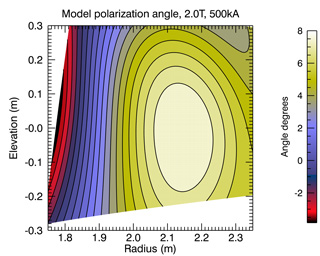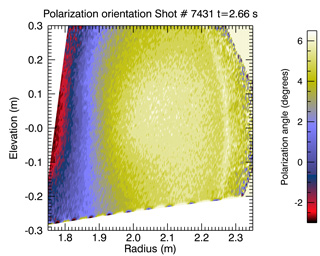Through a number of international collaborations, we are deploying advanced diagnostic systems to better understand the physics of the pedestal and edge regions in tokamak plasmas.
High edge pressures can drive large eruptive instabilities that spoil plasma confinement and damage the wall. Controlling or mitigating the effects of these edge localised modes is one of the major thrusts of the international fusion program leading in to ITER.
These studies are built around Doppler imaging of ion flows and temperatures in the scrape-off layer and divertor of the DIII-D tokamak, imaging of pedestal currents in the edge plasma of the KSTAR tokamak. Similar systems are being deployed at ASDEX-U in Germany and the MAST tokamak in England.
Motional Stark effect (MSE) polarimetry measures the polarization orientation of Stark-split D-alpha emission from an injected neutral heating beam. The splitting and polarization is produced by the induced E-field (E = v x B ) in the frame of the injected neutral atom. The polarization orientation delivers information about the internal magnetic field.
We have developed a unique system that allows high-speed imaging of the tokamak internal magnetic field by measuring the polarization orientation of the motionally-induced Stark emission from an injected high-power neutral deuterium heating beam.


Left: A model of the polarization orientation expected for a circular plasma with toroidal field 2T and toroidal current 500kA.
Right: a typical observed polarization image that has been mapped onto the KSTAR tokamak coordinate system. There is a fixed calibration offset that is not corrected. The ridge in the right edge of the experimental image is due to current flowing in response to the large pressure pedestal that is known to form during high-confinement discharges.